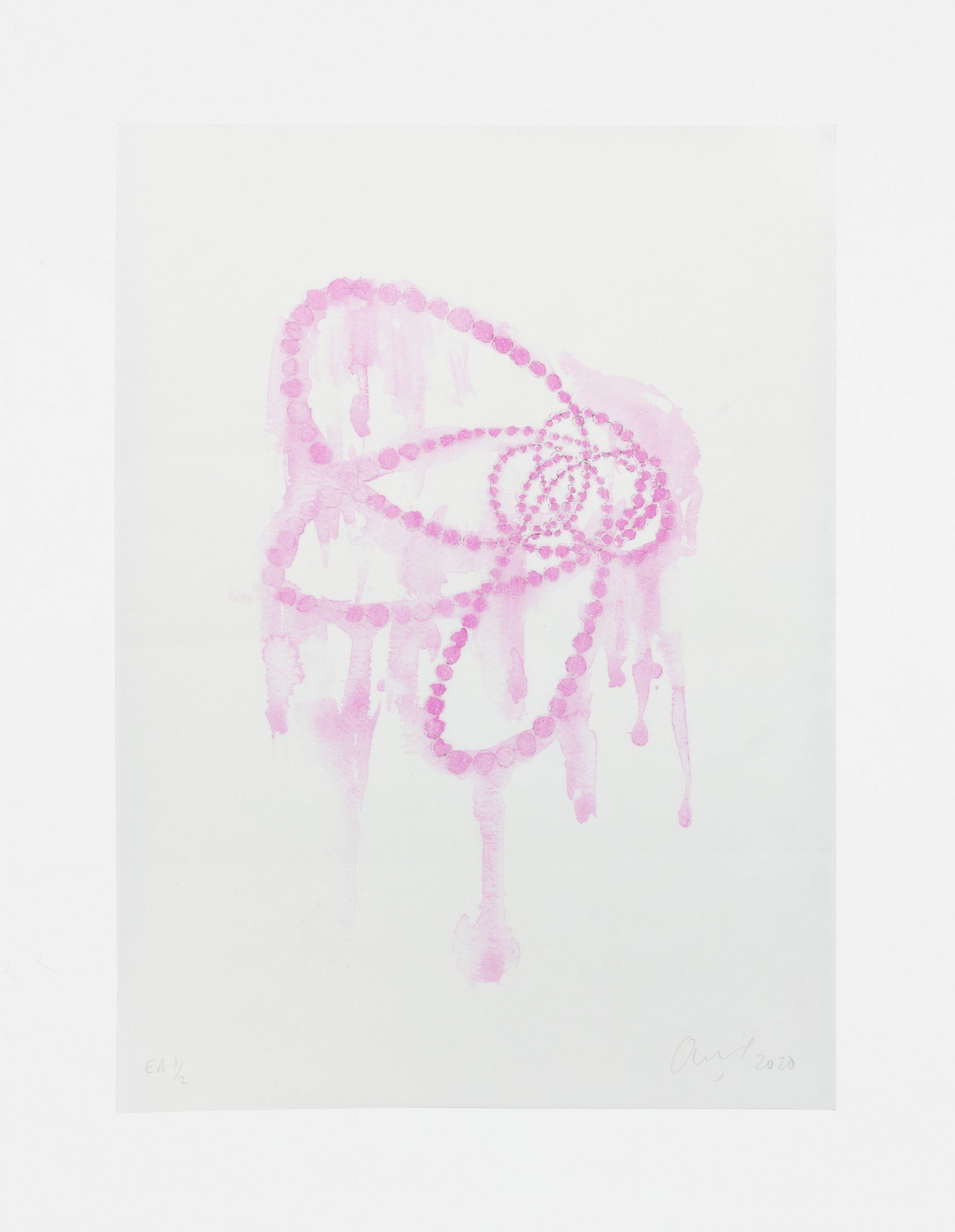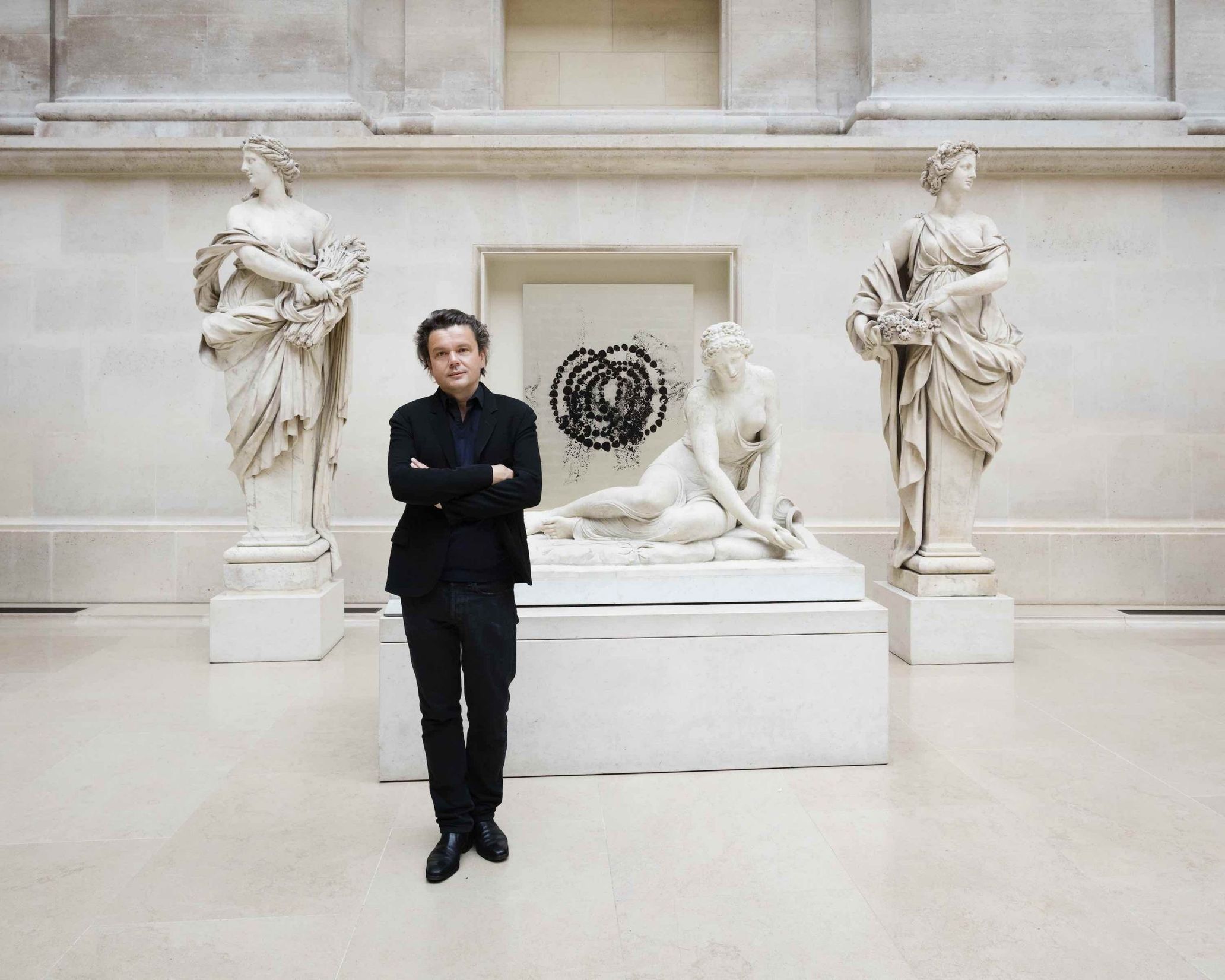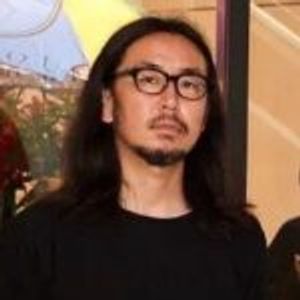His retrospective at the Centre Pompidou (2011) drew some 200,000 over a three-month period. As for his work in Japan, he is the creator of the “Kin no Kokoro” sculpture in the Mori Garden of Roppongi Hills, as well as of art installed on the third floor foyer space of the Chanel Ginza store.
The exhibition recently held in September at Perrotin Tokyo, the “Dream Road,” was the artist’s first gallery exhibition in Japan, and the first solo exhibition of new work in eight years since the retrospect held at the Hara Museum in 2012. More recently, he collaborated with Diptyque, the fragrance brand, as well as working on a team of six contemporary artists to create the Louis Vuitton Artycapucines Collection.
Here we consider Jean-Michel Othoniel’s ideas about crossover between Japanese and French cultures, such as the chrysanthemum as the theme of the current exhibit, and the inspiration the artist derives from the symbolic significance of the flower in ancient Japanese culture. How does he view the rapidly-changing environment as impacted by the COVID-19?
Photography Kei Okano
©Jean-Michel Othoniel / JASPAR, 2020. Courtesy of Perrotin
ーーThis is your first solo exhibition in Japan in eight years and your first gallery show in Japan. How do you feel about holding your exhibition in a situation like COVID-19?
Jean-Michel Othoniel:It is a big frustration for me, I always love to come to Japan and the show would have been a fantastic opportunity to see my friends and all the people and museums that follow my work.
ーーYou have been working in a variety of mediums, from drawing and sculpture to photography, writing and performances, and then in the early 1990s you began to work on glass works. What does it bring to an artist to cross genres?
Othoniel:The medium have no importance for me the idea is the most important. My drawings are connected to my sculptures, my texts to my photographs. I love the energy you can find in crossing those genres.
ーーThe theme of this exhibition, chrysanthemum, is a flower that signifies longevity. What is your view of Eastern thought, including the meaning of flowers, for you?
Othoniel:Yes the connection with the world and our life on earth is part of my work I love to look at the wonders of nature. Flowers are the first images. They were on earth before man and when we look at them we have the same emotion as the first man of humanity had.
ーーYou have said that “The Chrysanthemum Festival” is like seeing a minimalist installation. Can you elaborate?
Othoniel:It is stunning how Japanese gardeners are able to be so precise in the growing of the flowers. They can duplicate the exact color, the exact size and the exact height of chrysanthemums and reveal them at the period for a specific moment.
All those elements are rules you can compare to minimalism language and its radicalism. So, when I look at those installations made with hundreds of surrogates flowers it reminds me of master pieces of minimal art.
© Jean-Michel Othoniel / JASPAR, Tokyo 2020 Photography Claire Dorn / Courtesy of the artist and Perrotin
ーーAll of your works are organic and beautiful, with a mysterious and immersive impression that we can’t seem to get out of. Did you intend for the viewers to react to the work, or did you intend for the viewer’s behavior and perspective to be a part of the work?
Othoniel:I love when people interact with my works. The mirrored glass reflects the viewer presence in the show, you can see yourself in each bead and your image is infinitely duplicated. You become part of the work and you make it move when you turn around the sculpture.
ーーAt the online preview, you commented on the exhibition “kiku”: “There is more to flowers than meets the eye, they are fascinating but at the same time dangerous. What elements of flowers that you think dangerous?
Othoniel:Beauty is dangerous and we can lose ourselves in our fascination for it, but in Asia the idea of contemplation is not an issue by itself it is step to spirituality.
© Jean-Michel Othoniel / JASPAR, Tokyo 2020 Photography Claire Dorn / Courtesy of the artist and Perrotin
ーーKiku – Hiwamoegiiro (Siskin sprout yellow)…You said “this is the gentlest work in this series.” Can you tell us more about your work, such as how you created the colors?
Othoniel:I love colors linked to nature and I try to create an emotion linked to our souvenir and our connection with Mother Earth.
And technically, I love to use natural pigments to mix the glass in fusion.
ーーYou have also worked on Louis Vuitton’s “Arty Capucine Collection”. It is made of black resin beads that are reminiscent of “The Black Lotus”. How does it feel to be involved in client work?
Othoniel:My connection with Vuitton is born from my relation with the Vuitton foundation that has been collecting my work for a long time.
Delphine Arnault asked me to be part of this project in a very personal way so I had the chance to work in a very joyful way and in a total confidence.
ーーDid the COVID-19 affect your production?
Othoniel:Yes it is a difficult moment in term of traveling and my sculptures need me and my staff to be installed that’s why I was not able be part of the opening of my show at Hirozaki Museum of contemporary art.
But at the same time it is good a moment to find time to read, write and draw.
ーーThe digital wave is spreading rapidly in the art industry. How do you think digital technology will affect art in the future? Also, please tell us about your future projects.
Othoniel:Digital is a very good way to promote Art all over the world. It helps young artists to show their work and enlarge their audience: the public for the arts is global now. I have a project in Montreal that will open as soon as I will be able to travel to Canada and in one year I will be back to Japan to install my sculpture for Hirosaki.
He was born in Saint-Étienne, France, in 1964. Since the 1980s, he has been involved in the creation of all manner of art, everything from drawings to sculpture to illustrations, photos, writing, and performance art. He began working with glass in 1993.
He has had exhibitions at the Cartier Foundation for Contemporary Art (2003); the Museum of Decorative Art, Paris (2007); the Centre Pompidou (2011), and more, as well as international exhibitions such as the Istanbul Biennial (2007). In Japan, he was part of the “Too French” exhibition at the Hara Museum, held in1991.
In 2006, his work was displayed at the Cartier Foundation for Contemporary Art Collection shown at the Tokyo Museum of Contemporary. The artist had his first gallery exhibition in Japan, entitled “Dream Road,” from September 16th-November 7th at Perrotin Tokyo. He currently resides in Paris.







